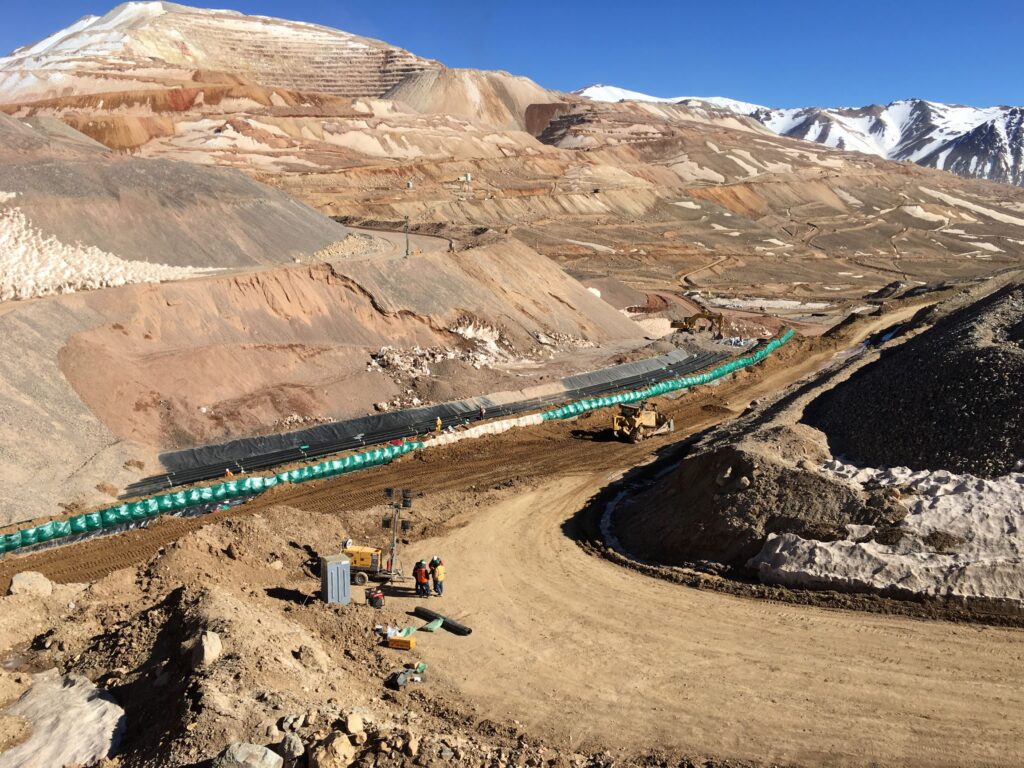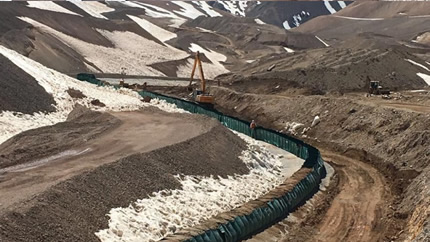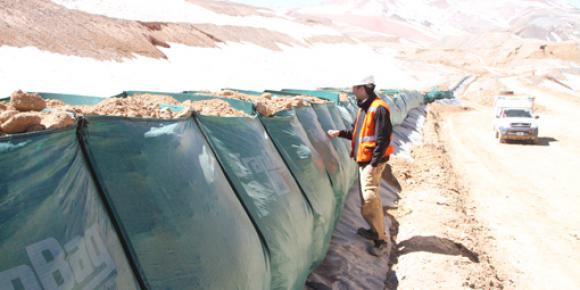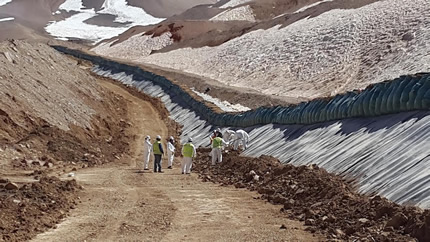Portable Containment Berms & Containment Pools
Learn more about spill control solutions that are portable, like containment berms and pools, as well as the benefits of using TrapBags as a spill control solution.

Spill containment barriers create an impermeable barricade around your working space, preventing dust and dangerous pathogens from spreading to the surrounding areas.
Portable spill containment products ensure you remain compliant during a construction project without adding bulky materials that take up valuable space.
What Are Portable Containment Barriers
Portable containment barriers protect the environment from spills and leaks. They are primarily used during construction projects.
Closing your business temporarily because of an ongoing construction project can lead to heavy losses. Instead of closing, you can install a temporary containment system before the work begins and have your business operate with minimal or no interruptions.
Uses for Portable Containment Systems
Portable containment systems act as spill control barriers. Spill control is a method used to contain any harmful chemical from spreading. In addition, these systems help improve your employees’ confidence that pathogens will not penetrate their workspace.
The barriers are collapsible and can be installed and dismantled without disrupting other operations. They are mainly used to contain spills such as:
- Chemical spills: When working with chemicals, you can use portable spill containment berms to contain chemical spills before they spread to other places.
- Sewage spills: You can use containment systems to meet the needs of wastewater systems. The system helps reduce pollutants in the water used by industrial facilities.
- Oil spills: Containment booms, absorbent material, or earthen dams are some of the oil containment methods available. The spilled oil is then recovered using mechanical means such as vacuum trucks or porous materials such as particulates and pads.
- Stormwater: In this case, portable containment pools act as large catch basins or a flexible wall barrier for the stormwater. Once the water is trapped, you can easily guide it without enclosing it.
Benefits of Portable Containment Systems
Spill containments are mandatory at gas and drilling sites to keep spills from harming the environment. In addition, temporary containment systems are designed to meet EPA standards and protect your business from environmental liability.
Portable spill containment berms are made using special polymers that can contain any spill. The containment berms should be corrosion and tear-resistant, leak-proof, and virtually indestructible. A berm that meets these features ensures any contained fluid sits harmlessly without reacting with the containment material.
In addition, temporary berms have the following benefits:
- Interlocking joints that make them highly portable
- Require little preparation and installation and are also clean
- Made of heavy-duty materials and are very versatile
- Chemical-resistant
- Available in modular, lightweight, and nonporous designs
Types of Portable Containment Systems
There are different types of collapsible spill containment berms. Understanding the various collapsible containment berm options helps you choose the best portable containment system for your project.
Portable Containment Berms
Temporary berms are constructed as an active containment measure if you discover an oil discharge on your site. The berms should be built on time to prevent the oil from causing contamination.
Portable Containment Pools
These are mainly used for containing stormwater but can also be used to control oil and prevent it from entering bodies of water.
Portable Containment Booms
The containment systems are booms that form a continuous barrier used as a precautionary oil containment measure. They are primarily used for containing oil floating on water. Booms are usually associated with a facility response plan for addressing spills.
There are two types of booms: beach booms used in shallow areas and sorbent-filled booms for land-based spills.
Primary vs. Secondary Containment
Primary and secondary containment each refer to levels of biological containment.
Primary
Primary containments are used to protect people and the immediate environment from exposure to harmful agents. They are made using microbiological techniques and safety equipment.
Examples of primary containments include:
- Enclosed containers
- Biological safety cabinets (BSCs)
- Safety centrifuge cups
Personal protective equipment such as laboratory coats and gloves can be used as an alternative when it’s not practical to work in BSCs.
Secondary
Secondary containments protect the environment close to the laboratory against spillage of hazardous materials. These require an excellent design to prevent dangerous materials from affecting the environment.
Examples of secondary containments include:
- Portable containment systems
- Work areas away from public spaces
- Hand-washing facilities
- Decontamination areas
- Special ventilation systems
TrapBag Containment Berms for Hazardous Spills
TrapBag containment berms offer cost-effective flood and erosion control that works the same as conventional sandbags but is more effective. In addition to protecting people and the environment against storm surges, mudflow, and flash floods, TrapBag berms also can be used as spill barriers and stormwater control.
TrapBags can be set up quickly to allow more time to clean up a spill in case of a chemical discharge. In addition, they help control large spills that need immediate containment.
FAQs
How Tall Should a Portable Berm Be?
Portable berms are available in various heights, depending on your requirements. Their sizes range from 6, 12, 18, 24, and 32 feet.
Can Containment Berms Be Driven Over?
Portable containment berms can be driven over by vehicles and equipment by simply folding the berm wall down to allow easy entry and exit.
Are All Spill Containment Barriers Temporary?
Spill containment barriers can be temporary or permanent. However, temporary berms are most preferred as they are portable and versatile. They are also easier to install and dismantle.
Start Your Project Today with TrapBag
Spills are likely to occur in any project that involves chemicals or oil. TrapBags come in handy when you’re faced with a spill situation but don’t have portable containment berms.
Unlike other spill containment systems, TrapBags are cost-effective and easy to set up before the spill spreads. In addition, they extend you the logistic time to schedule spill removal from the contaminated area.
If you have a project that deals with chemicals and oil but doesn’t have other types of spill containments, TrapBags are your best option. They are quick to deploy in case of an emergency and are an affordable option. If you want to order TrapBags or learn more about them, don’t hesitate. Contact us today to start your project.
Get the Dirt Before the Flood Hits
Stay ahead of flooding, erosion, and disaster response challenges. The Dirt, TrapBag’s monthly newsletter, delivers field-tested tips, real-world case studies, and the latest in barrier technology straight to your inbox.



